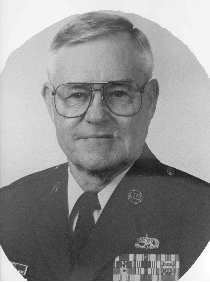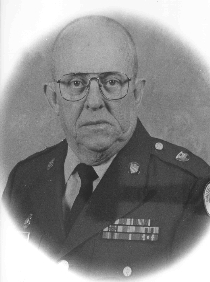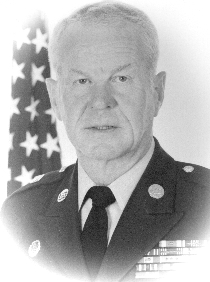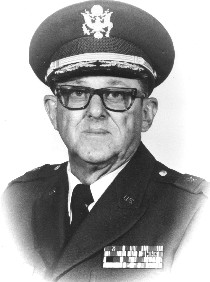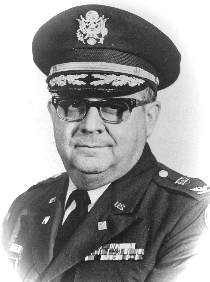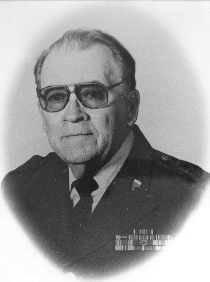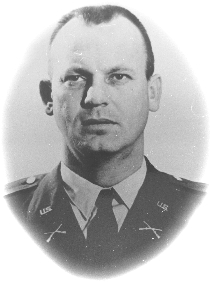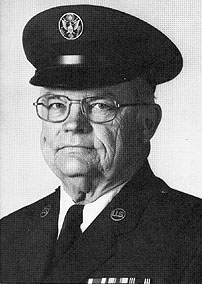 COL Robert H. Newby
COL Robert H. Newby
- Col. Newby served in the Kansas Army National Guard, the U.S. Army Reserve, and on active duty for more than 40 years, rising in the ranks from private to colonel.
He enlisted with Headquarters Troop, 114th Cavalry, 24th Cavalry Division, Topeka, in 1934 and served with the Guard until 1938. He returned to the Guard in 1939 and was activated along with the remainder of the 35th Infantry Division in December 1940.
Newby achieved the rank of staff sergeant by 1942 but took a career turn and attended Officer Candidate School at Fort Benning, Ga. After commissioning, he became a platoon leader at the Branch Immaterial Training Center, Fort McClellan, Ala., followed by another stint as platoon leader in 1943, this time in Europe with Company A, 313th Infantry Division. In September 1944, he moved up to regimental headquarters as liaison officer/assistant S-1 (personnel officer) and liaison officer to the French 2nd Armored Division.
During his World War II service, Newby earned two Bronze Stars, the Purple Heart, the Combat Infantry Badge, the French Croix de Guerre with palm, and several campaign medals and service ribbons.
Newby returned to the United States in June 1945 to serve a a company commander with a training battalion at Camp Robinson, Ark., and was assigned to the officer reserve corps by year’s end. He returned to the Kansas Army National Guard in 1947 with Headquarters, 137th Infantry Regiment, 35th Infantry Division.
Newby continued a distinguished career with the Guard for the next 20 years. He served in the G-4 (logistics), G-3 (training and operations), and G-1 sections at 35th Infantry Division headquarters and was the S-3 at the 137th Infantry Regiment before becoming executive officer of the 2nd Battle Group, 137th Infantry Regiment in 1959.
He played a critical role on state duty during the 1951 floods in Topeka, protecting the Topeka water works. He also served as an instructor for Class #1 of the Kansas National Guard Officer Candidate School.
Newby went on to command three battalions: the 135th Transportation Battalion; the 169th Support Battalion; and 2nd Battalion, 137th Infantry.
His command of 2nd Battalion, 137th Infantry came at a time when his unit and the rest of the 69th Brigade were chosen to be part of the Selected Reserve Force and was authorized to become fulled staffed, supplied, and trained in order to achieve and maintain mobilization and combat-ready posture during the Vietnam War. This proved to be critical because shortly after Newby transferred from the Guard, the brigade was mobilized for active duty.
With his promotion to colonel, Newby transferred to the U.S. Army Reserve and remained there until his retirement in 1976. In 1993, Newby was inducted into the Officer Candidate School Hall of Fame at Fort Benning.
He is a lifelong member of the American Legion, the Retired Officers Association, the Reserve Officers Association, the National Guard Association, the 35th Infantry Division Association, and the Military Order of World Wars.
As a civilian, Newby served as a special agent for the intelligence division of the Internal Revenue Service from 1948 until 1973. He belongs to the National Association of Treasury Agents and is a member of the Masonic Lodge and a trustee with Grace Christian Church, Kansas City, Kansas.

